Analyzing the Transformation of Andrew Benintendi's Swing

The All-Star break is a convenient line of demarcation in the baseball season. It gives us the familiar first-half/second-half designations, even though the halves aren’t split exactly down the middle. And, of course, it provides the basis for the familiar “tale of two seasons” trope. Where would we be without that story structure?
There isn’t a similar dividing line within each half of the season. There’s no such thing as a first half of the first half, at least not in the way we talk about these things, or, say, a website like Baseball-Reference tracks them. There are no stories about a tale of two halves within one half of the season. But perhaps there should be. And, if this does become a new genre of baseball story, it should start with 2018 Andrew Benintendi.
The Red Sox, as a whole, have been tearing the cover off the ball this season. They rank first in the league in runs, batting average and slugging, second in homers, wOBA and weighted runs created plus, and fourth in OBP. It should come as no surprise, then, that, entering play on Thursday, they have the best record in baseball at 43–19.
Leading the way all season have been Mookie Betts and J.D. Martinez, who would have to appear on any short list of AL MVP candidates a little more than two months into the year. Betts, who’s on the DL with an abdominal injury, is hitting .359/.437/.740 with 17 homers, while Martinez carries a .317/.375/.652 slash line to go with his league-leading 20 bombs and 52 RBI. They both turned it on in early April and haven’t looked back.
Such has not been the case for Benintendi, who struggled for the better part of the first six weeks of the season. Benintendi woke up on May 12 hitting .243/.335/.404 with two homers in 158 plate appearances. He was striking out 18.4% of the time—not prohibitive by today’s standards, but comfortably more than he did last season—and generally not holding up his end of the bargain as the No. 2 hitter in one of the best lineups in the league. After a strong rookie season that saw him go 20-20 with 90 RBI and 84 runs, one of just two players to reach all of those thresholds, Benintendi appeared perilously close to taking a step back in his second full season in the majors.
In that May 12 game, Benintendi went 3-for-5 with a double and two RBI. He got one hit apiece in both of Boston’s next two games, and then again went 3-for-5 with a homer and a double. He went 2-for-4 the next day, and has kept it rolling ever since. From May 12 through Wednesday, a stretch covering 23 games and 104 plate appearances, Benintendi has hit .378/.442/.756 with eight homers and 25 RBI. He has walked (11) nearly as many times as he has struck out (14), and over the last 30 days only Jose Ramirez has racked up more than his 2.0 fWAR.
There’s no longer any concern about this being a setback campaign for Benintendi. He’s hitting .296/.378/.544 with 10 homers, 10 steals and 43 RBI, and his surge has made Betts’ trip to the DL bearable. But what’s behind his turnaround in the second half of the season’s first half?
First, we have to look at Benintendi’s setup at the plate and his swing mechanics. Right away, we see substantive differences. Check out the following two screenshots of Benintendi as he’s waiting for the pitch to be delivered. The first is from Opening Day and the second is from April 19, just moments before he hit his first home run of the season.
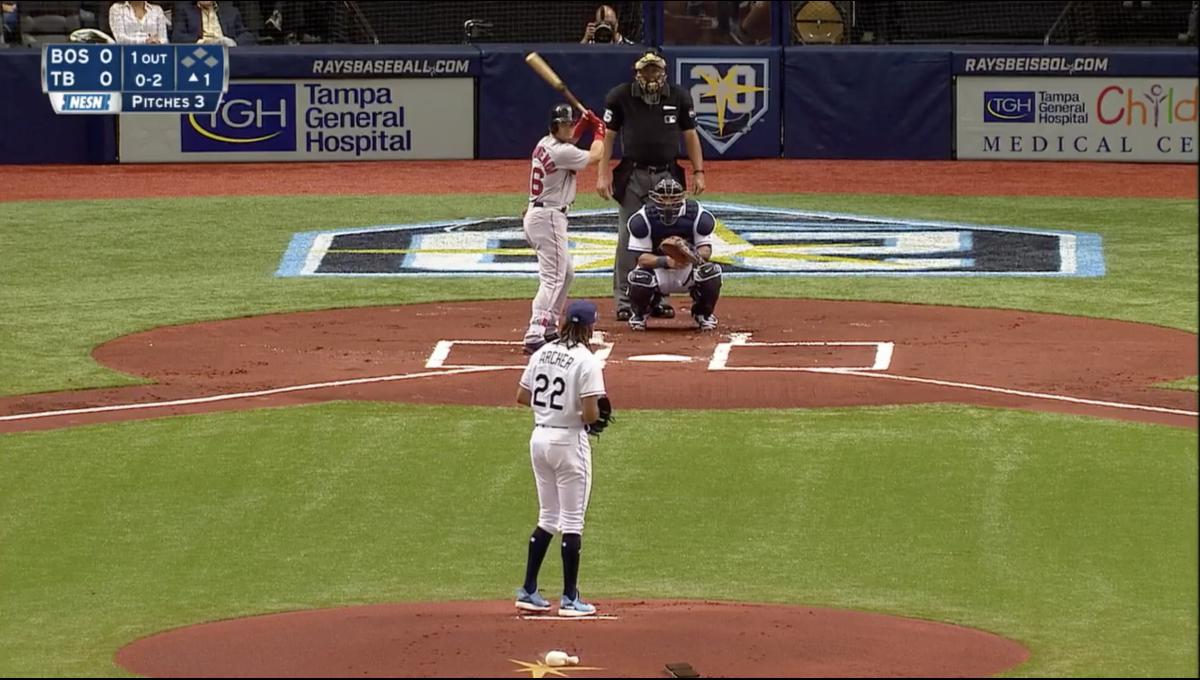
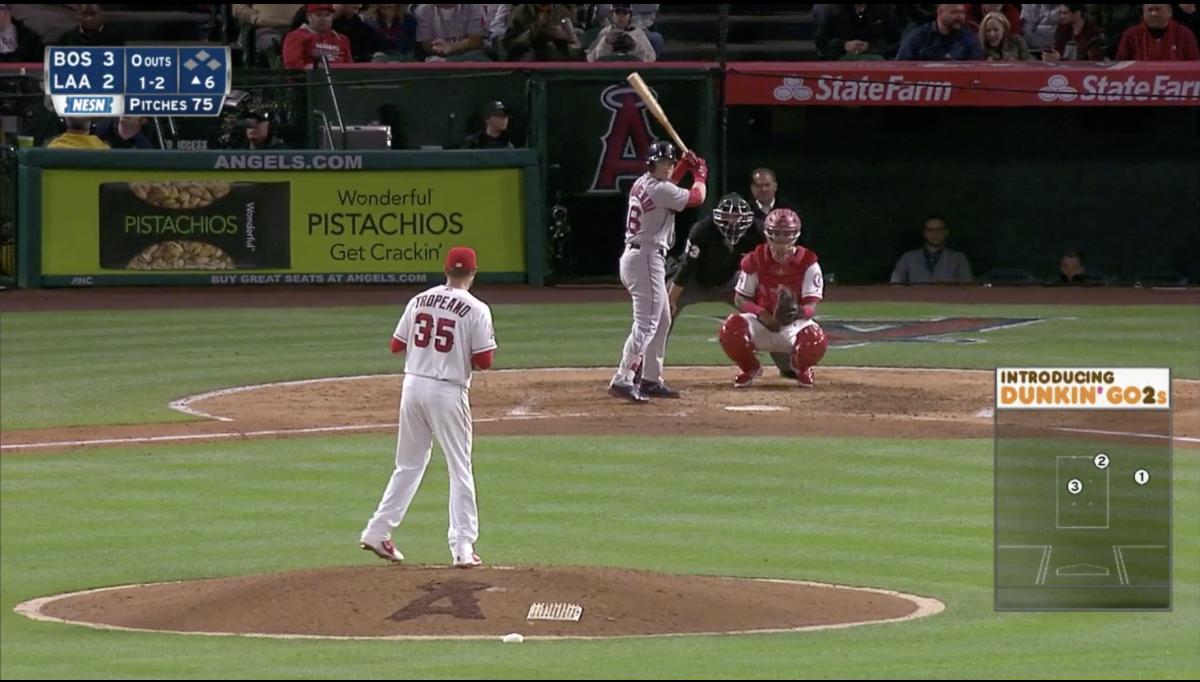
Compare those with this look, from his first plate appearance in the series finale with the Astros from last weekend.
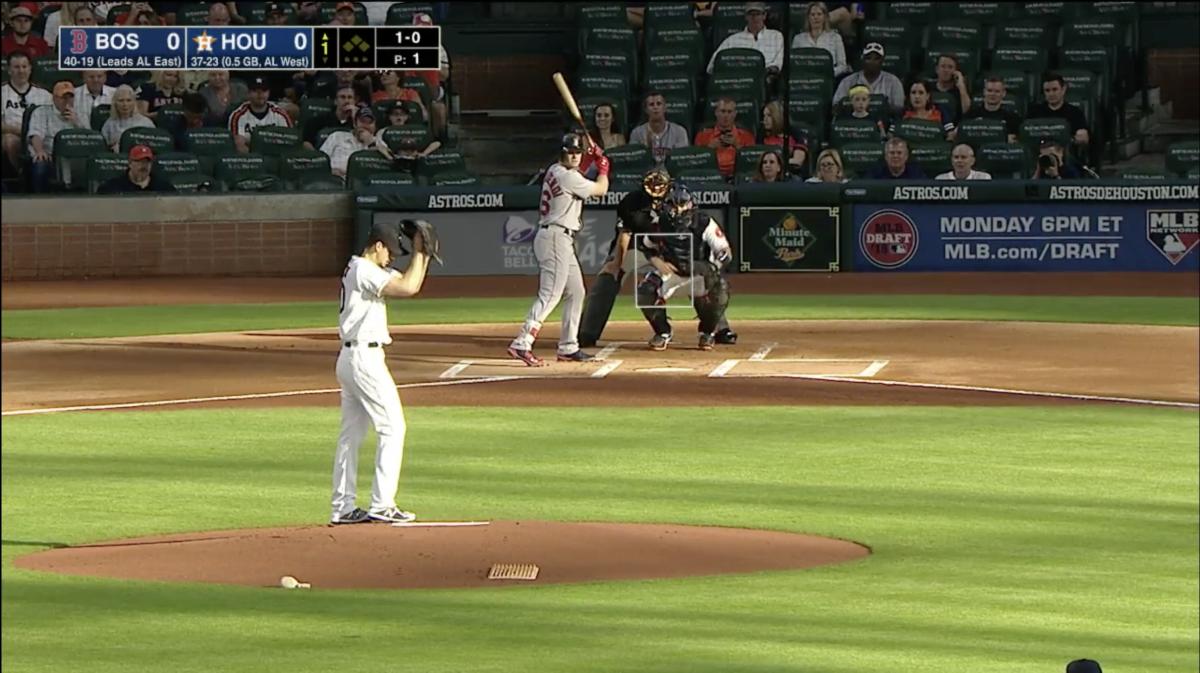
Are we even sure that’s the same hitter? Look at all the differences. Benintendi’s hands are lower and his stance much more open. If we could roll the tape, you’d also see that he has added a bigger leg kick and stride as a timing mechanism before firing his swing. There’s good reason to believe these changes are at the heart of Benintendi’s mid-first-half breakout.
Benintendi didn’t roll out of bed on May 12 and suddenly decide to make this change. In fact, his stance started opening up on April 26 in a game against the Blue Jays. He went 2-for-4 with a double in that game, but it still took him another two weeks to really turn on the jets. In that time, his stance opened up some more and his hands dropped a bit farther before both landed where they are today.
Here’s a slightly more open Benintendi on April 26.
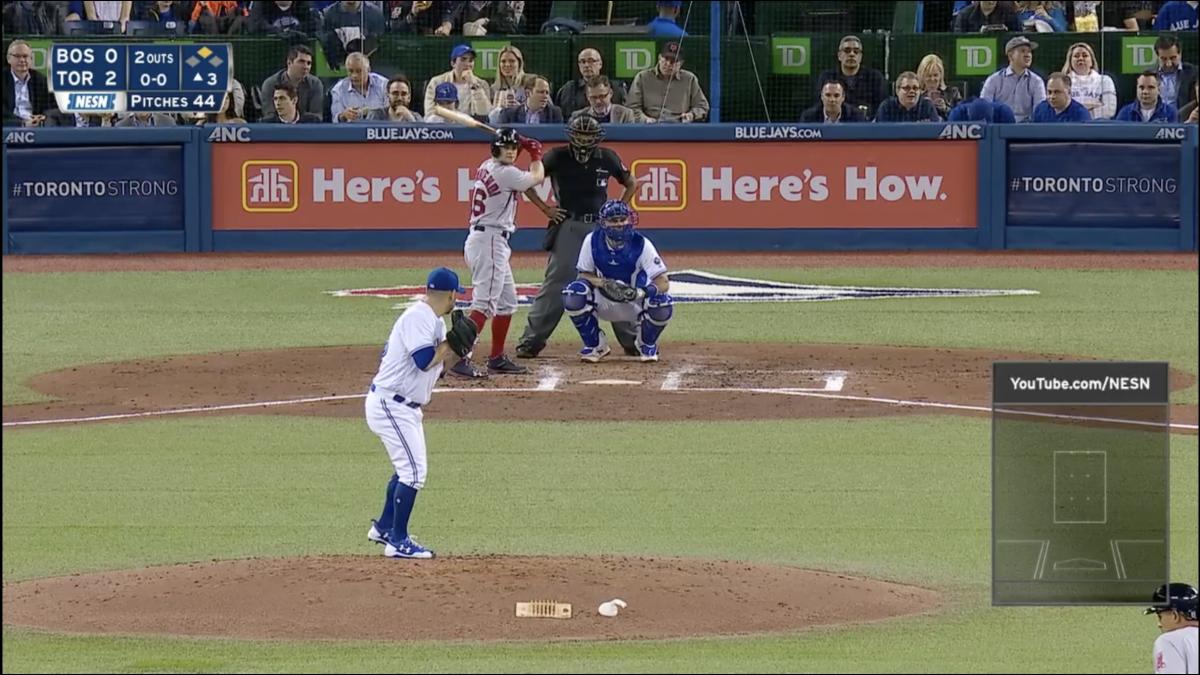
And here he is on May 5.
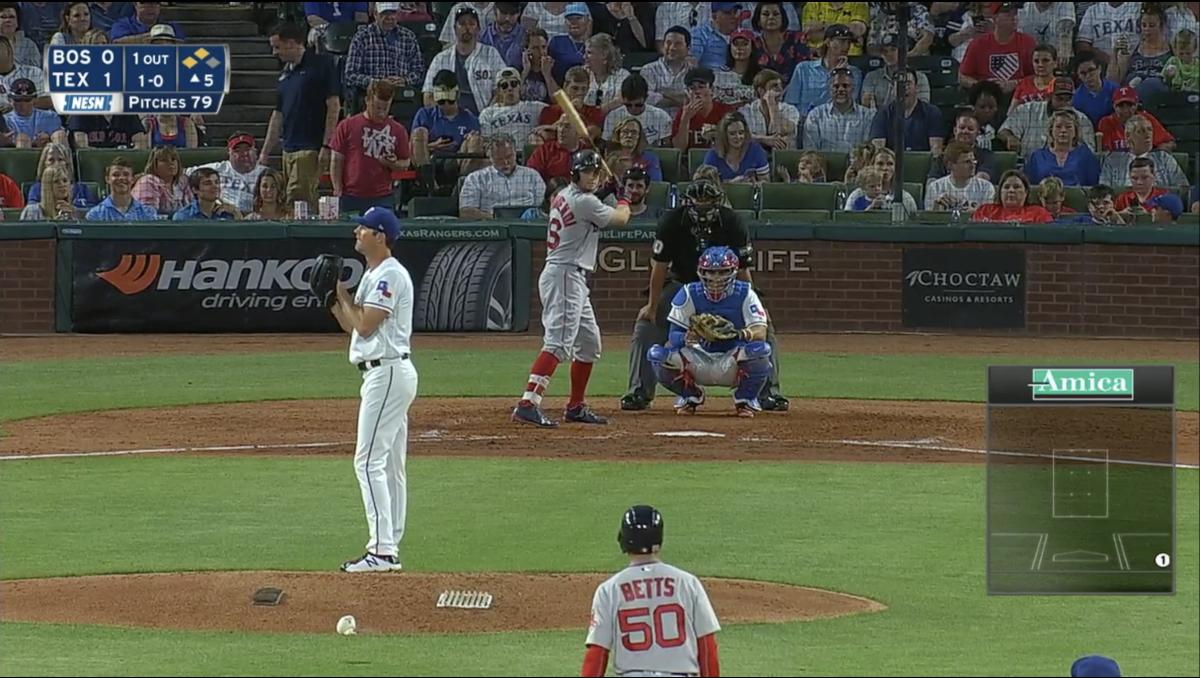
Benintendi’s performance against fastballs, specifically four-seamers, has improved dramatically over the last month. The following tables from Brooks Baseball show Benintendi’s results and averages against all pitch types. The first table is from Opening Day through May 11, and the second one begins on May 12 and runs through the present day.
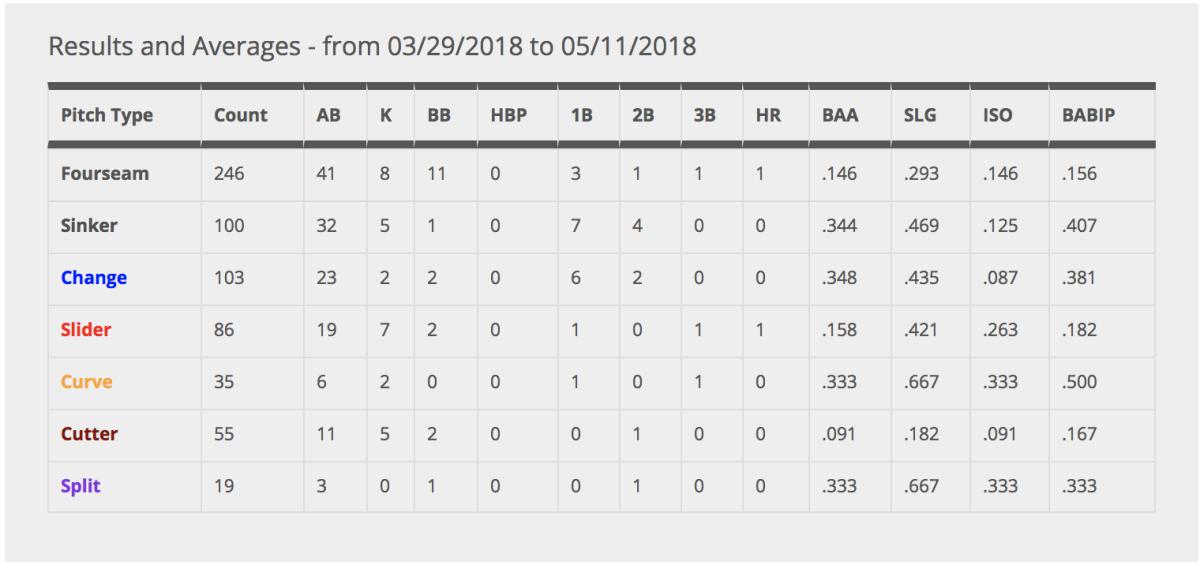
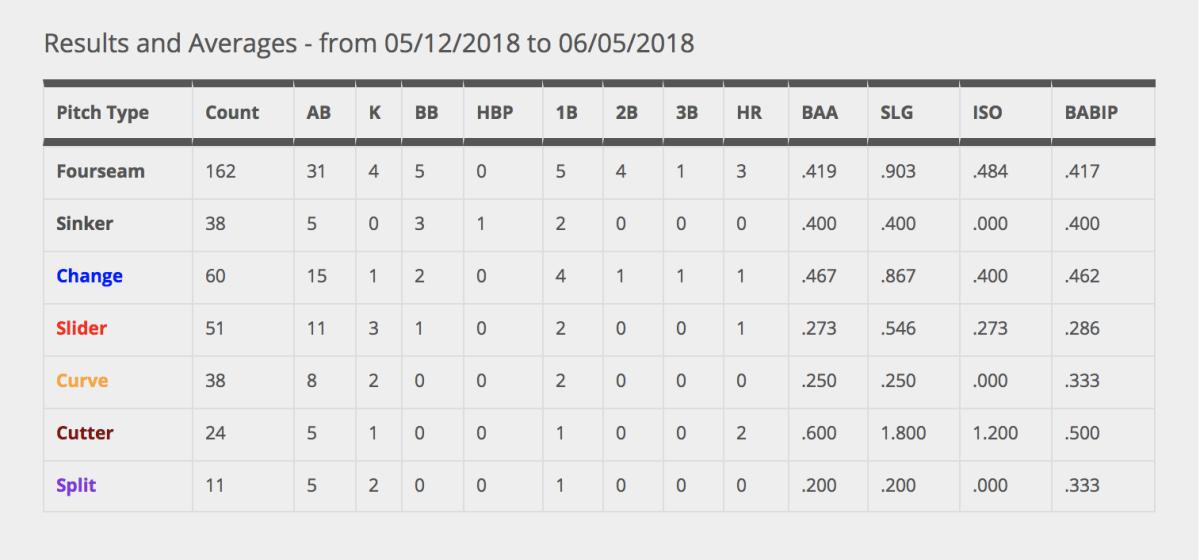
Look at that mammoth difference on four-seamers. Bad Benintendi hit .146 with a .293 slugging percentage against four-seam fastballs. Good Benintendi upped those numbers to .419 and .903, respectively. Now, intuitively, that makes sense. Not only is a hitter going to get more opportunities against four-seam fastballs than any other pitch, but it’s the offering with which hitters typically do the most damage. Still, not every player is capable of an improvement this significant. There has to be a high level of underlying skill behind a player mashing four-seamers to the degree Benintendi has the last month. The question for us is, why wasn’t he doing the same the first six weeks of the season?
The first factor to consider is swing rate. You can’t do anything with a pitch if you don’t swing at it. This, however, is not our answer. Bad Benintendi swung at 44.2% of the four-seamers he saw, while the good version has a 45% swing rate against the pitch. In recent years, we’ve seen a number of players—Freddie Freeman and Marcell Ozuna jump to mind—make similar gains by being significantly more aggressive against pitches in the strike zone. This, too, is not the answer. Benintendi’s swing rate by zone against four-seamers for the two periods in question are below. Add them up, and you’ll get a 75.3% swing rate through May 11, and a 73.8% swing rate for May 12 through today.
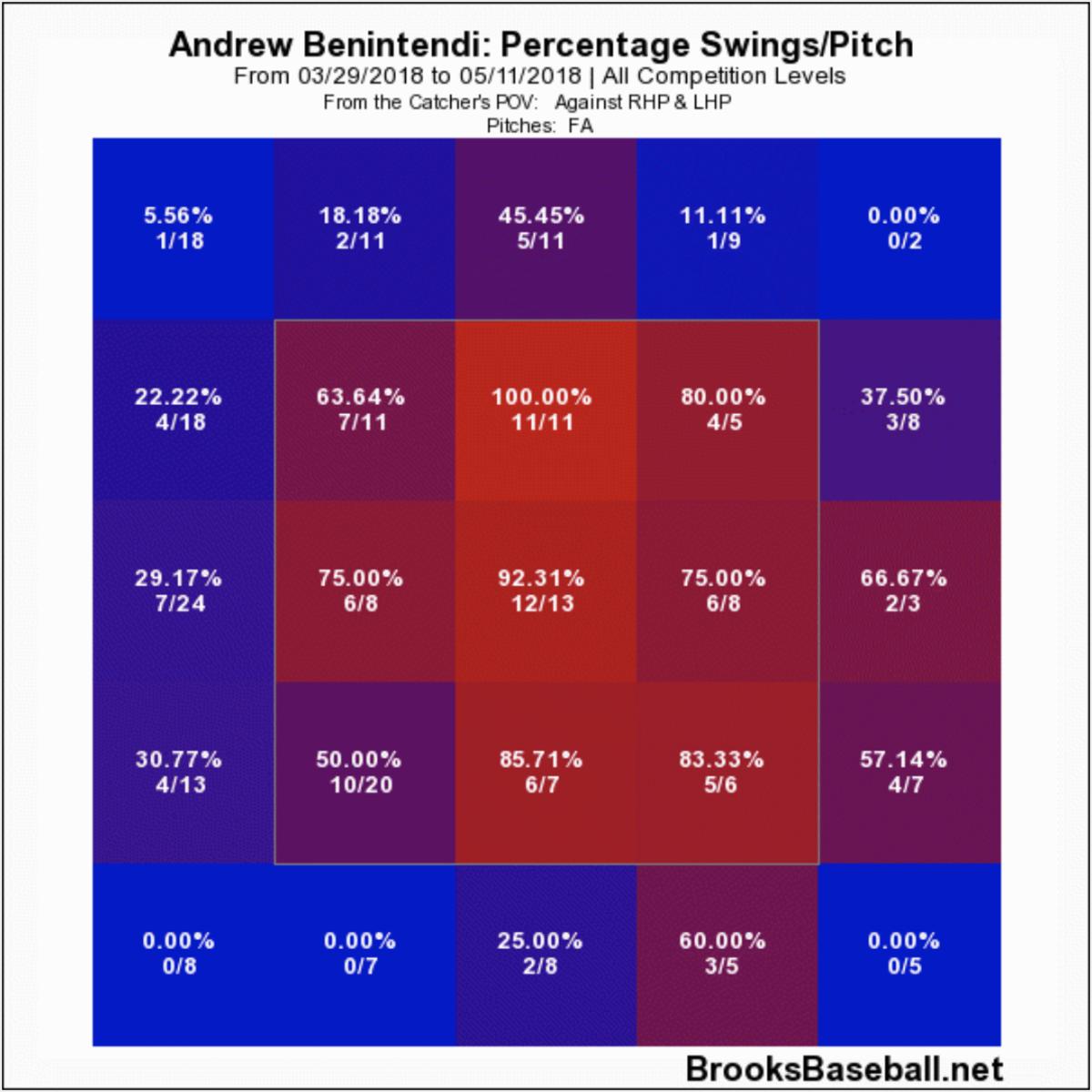
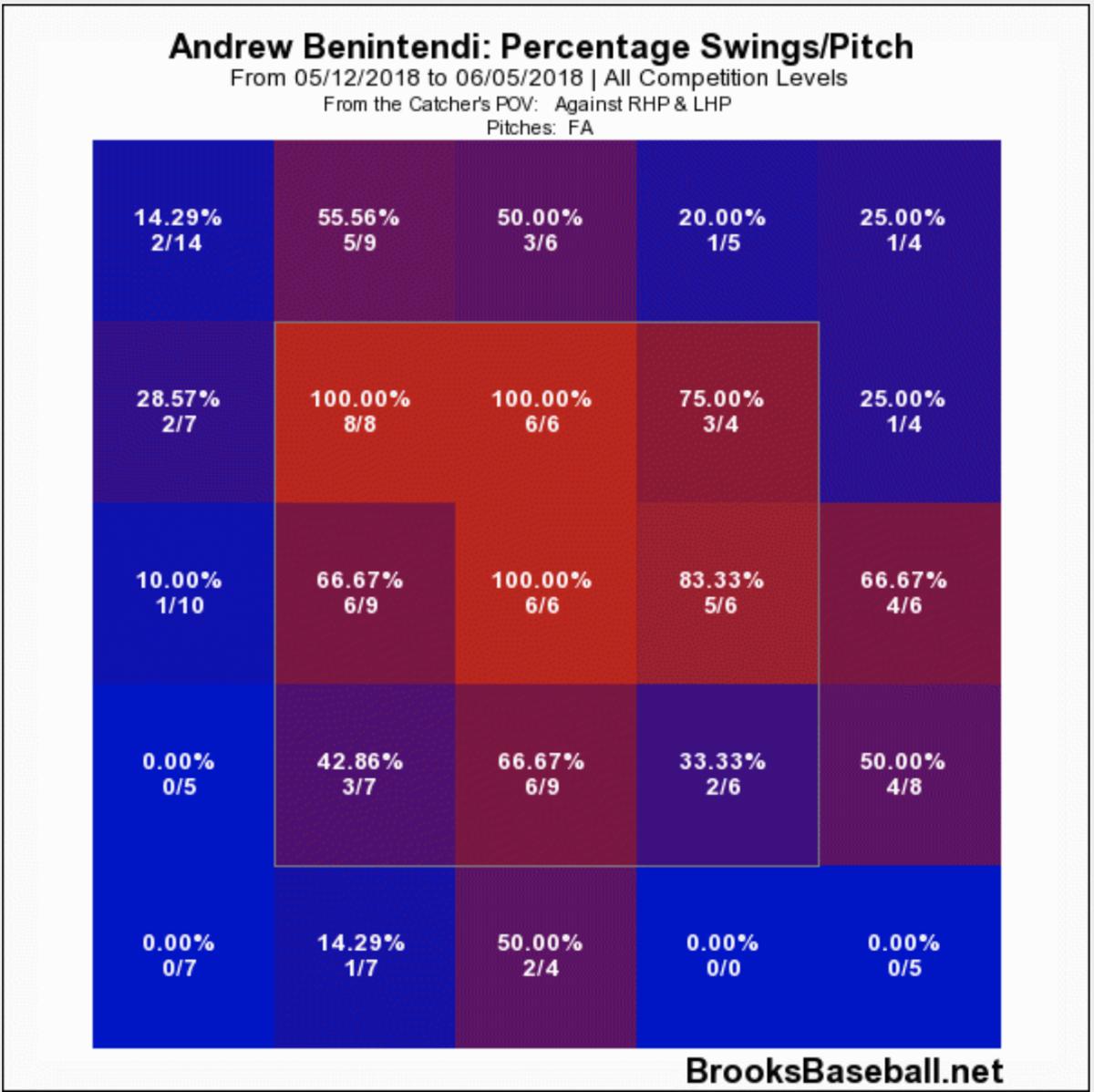
Benintendi isn’t swinging at fastballs more often, and he’s actually swinging at a lower percentage of them in the zone. So how do we explain this? Well, first, we’re talking about a couple of small samples, and part of the story is likely the vagaries of baseball smoothing out over a longer term. Yet, we still have to consider the change in Benintendi’s setup at the plate. An open stance can make it easier for him to get around on inside pitches, while lower hands can help a hitter get has bat into the hitting zone quicker and better cover low pitches. Sure enough, look where Benintendi has done his most damage against all pitches since May 12.
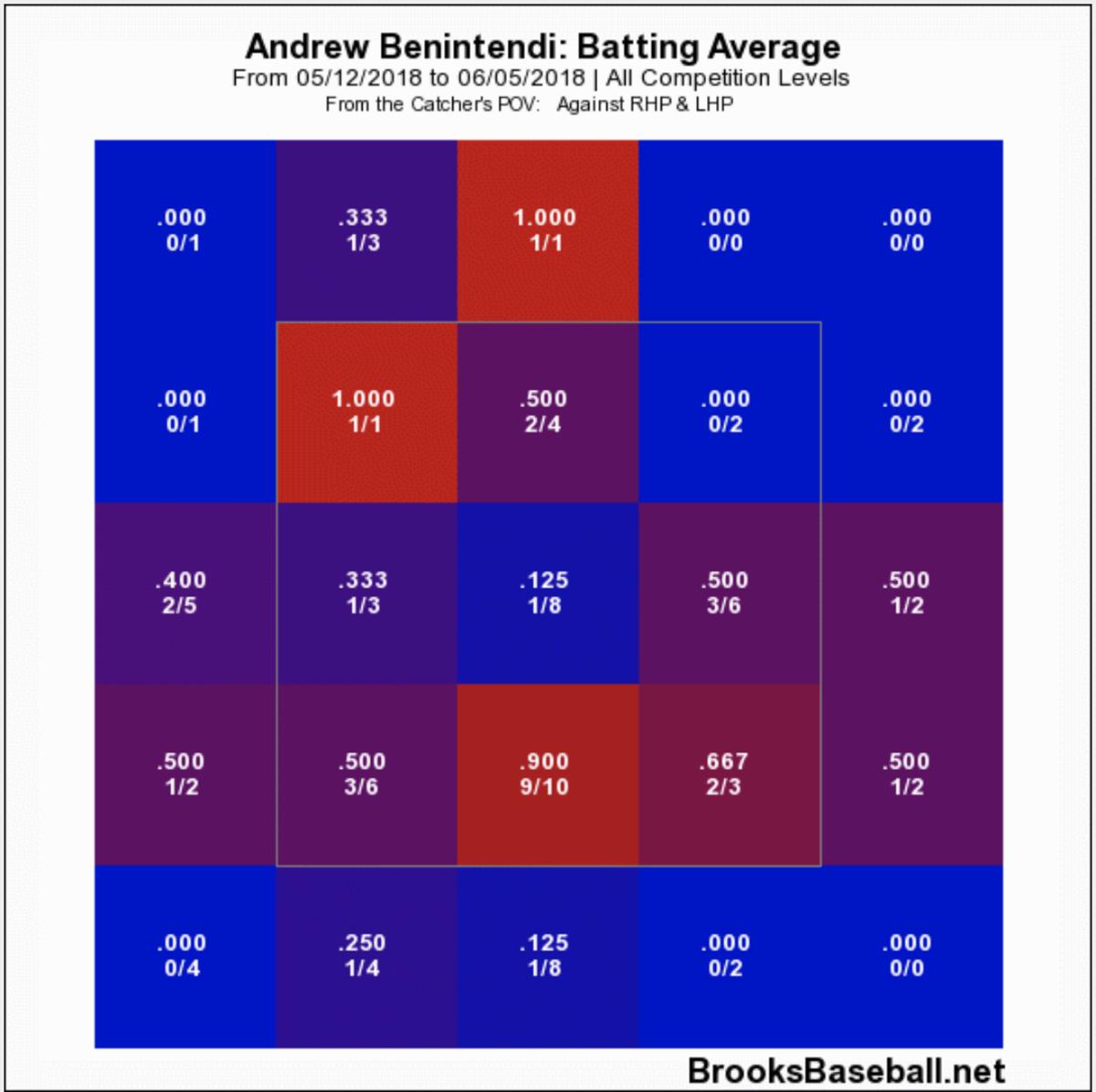
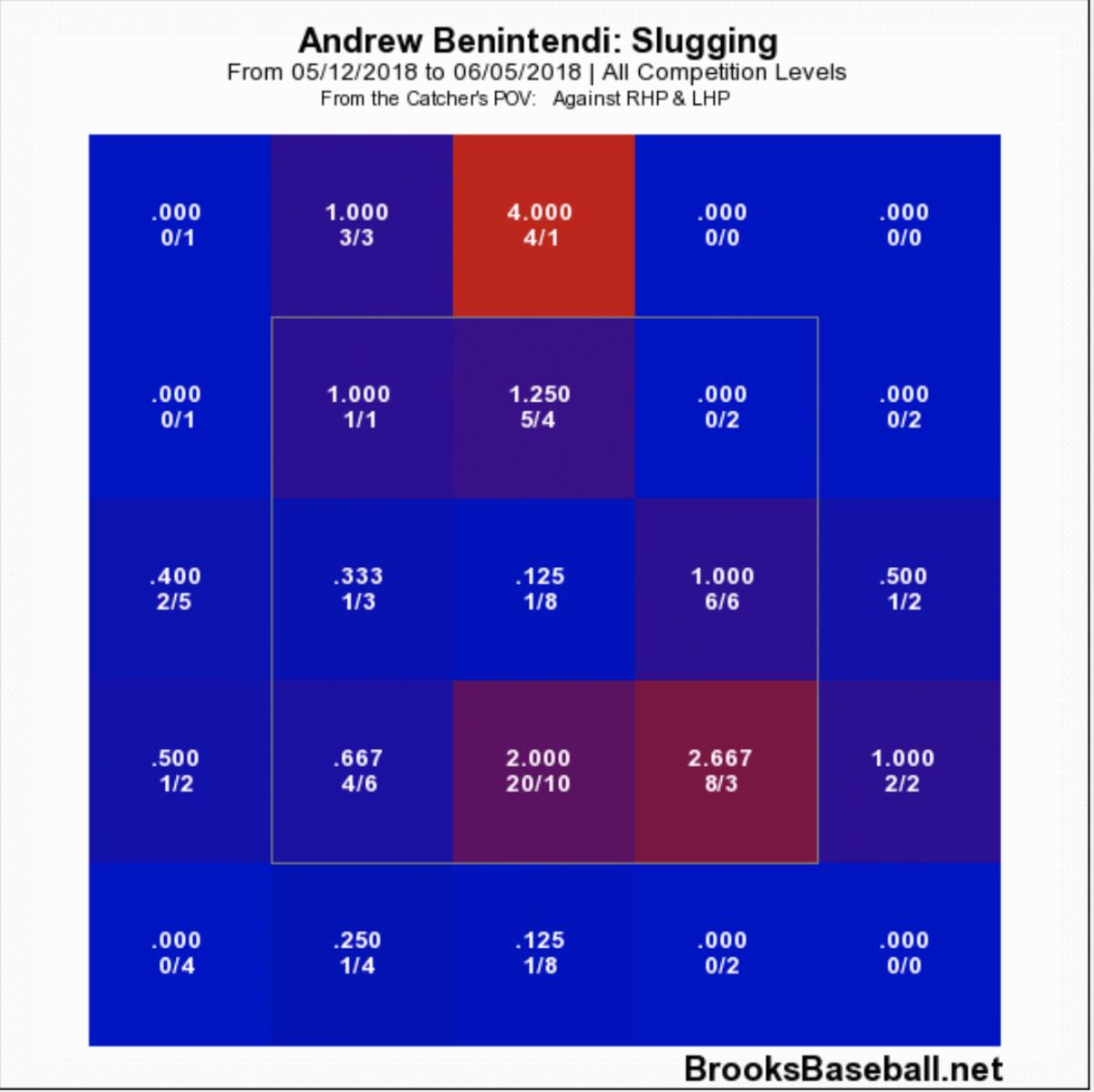
Those final two charts tell me two things: One, Benintendi’s mechanical changes are working wonders. Two, pitchers better watch out when he starts doing something with middle-middle pitches.
